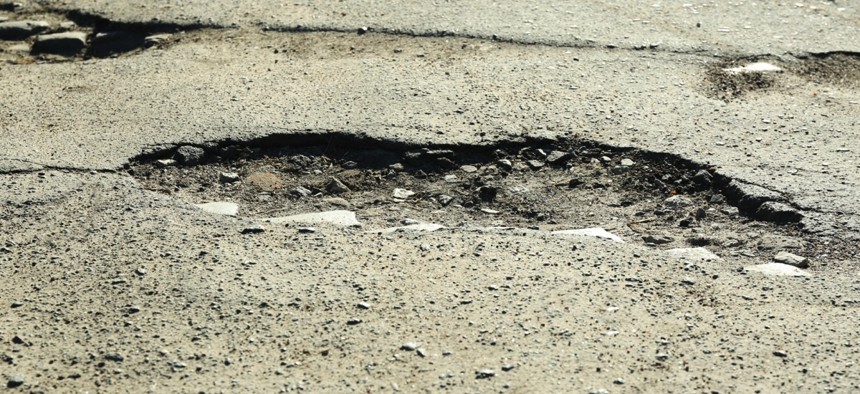From DIY to Smartphone Apps: Different Ways Potholes Are Getting Filled

Africa Studio / Shutterstock.com

Connecting state and local government leaders
Some citizens use their own novel approaches including flowers and mosaics as cities deploy reporting and tracking tools.
This year’s winter recovery has been slow going in many U.S. cities, especially when it comes to needed pothole repairs. While some cities have aggressive programs to blitz quick and long-term fixes, it’s not unheard of this time of year as springtime weather warms up for local residents to take a do-it-yourself approach.
A Schenectady, New York, woman has been planting pansies in potholes hoping city officials will take the hint and fill them properly, The Daily Gazette reported last week.
The flowers Elaine Santore plants on Broadway and North Center Street have the added benefit of encouraging other city residents to fill neglected potholes in their neighborhoods.
“It has been a horrible winter, so I wanted to cheer some people up,” Santore told the newspaper. “Everybody knows that the potholes are bad and that the city could do a better job.”
Since May 2013, mosaicist Jim Bachor has been turning Chicago potholes into artwork only to see his flower and ice cream cone designs eventually paved over with asphalt, according to WGN-TV.
Filling potholes can be a tough assignment for some municipal governments. Short-term repairs done earlier in the season often need to be followed up by long-term fixes once temperatures get warmer. Then there’s the keeping track of what’s been repaired, what still needs attention, while getting newly reported potholes into the repair pipeline.
In recent years, smartphone apps can help cities empower their citizens to relay pothole locations to city and county public works authorities.
Detroit, for instance, launched a free mobile app, Improve Detroit, on April 8 that allows users to report potholes and about a dozen other public works issues, the Detroit Free Press reported. More will be added to the app later.
Improve Detroit provides any user who files a complaint with updates as to its status, and on the backend the city gets to see how long it takes for staff to fix various issues.
The app "marks a fundamental change in the way city government operates," Mayor Mike Duggan told the Free Press.
Local governments that don’t usually face bitter winter weather conditions are also battling their own pothole issues. Sun Belt cities are not immune to potholes.
A pothole repair backlog plaguing Houston has prompted dramatic changes by City Hall, according to the Houston Chronicle.
For starters, more crews and contractors were added to the streets in February with additional funds freed up in the summer. Pothole patching requests decreased by more than 1,000.
A Google Maps-based management system was also adopted that flags duplicate complaints. The system, Google Maps Coordinate, schedules 60 percent more daily street maintenance inspections throughout the city.
"I'm glad we're getting caught up now (on technology,)" Councilwoman Brenda Stardig told the Chronicle. "When I got here, I felt like we were in the 1980s."

NEXT STORY: Why hybrid cloud can get agencies over the hump





